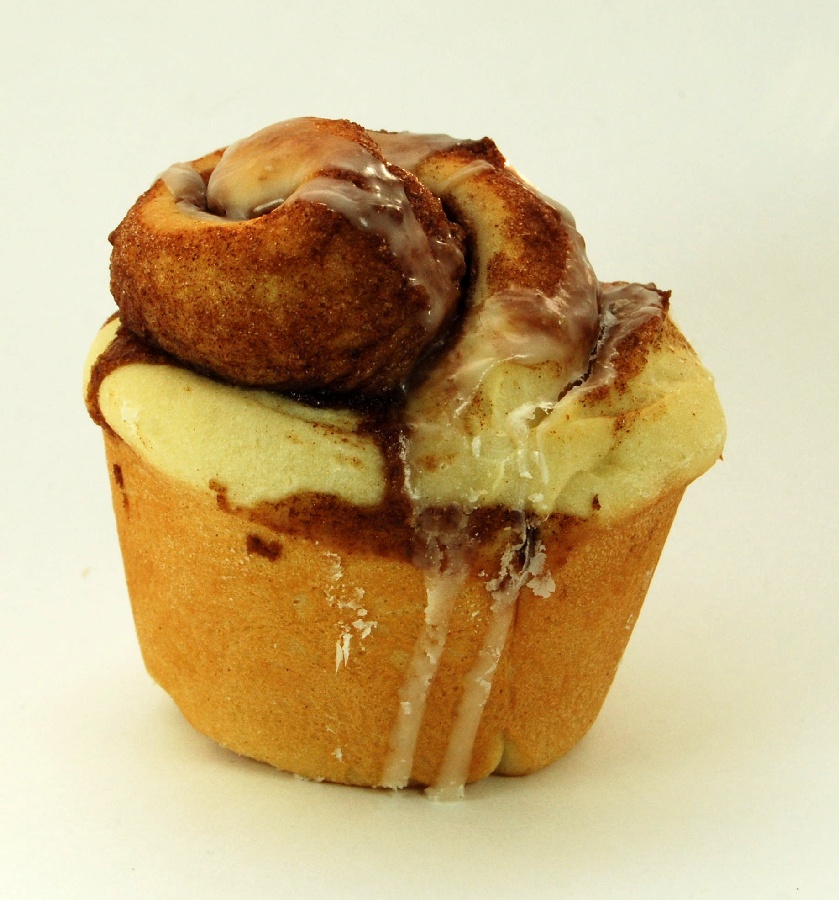How To Say What Needs To Be Said: Part I
Have you ever had something you wanted to express, but simply couldn't find the words?
In many ways, words define what we can express. If, for example, we want to describe to someone how a particular food tastes, we have to use words that we know - and, just as important, that the recipient knows. "Hot", "spicy", "tangy", or "sweet" are words we can use to describe that type of food. Each word still leaves room for interpretation, but we can communicate an adequate amount about the taste of the food by using those words.

Img Credit: Flickr Creative Commons, http://www.flickr.com/photos/artbystevejohnson/4621634649/
How about when we want to describe the feeling of a food, though? Sure, the cinnamon bun might be "sweet" and "gooey", but so are the ones from the grocery store.
What happens when we bite into a certain cinnamon bun, and the combination of the texture, the tastes, and the smells takes us back to a childhood memory when we'd arrived home from school on a particular Friday afternoon and the scent of the homemade cinnamon buns wafted up our nostrils as we swung open the door and ran inside to devour one of the most delectable cinnamon buns we'd ever had...
And THIS cinnamon bun - this one right here - tastes exactly like that memory. The spices that sit on our tongue, the sudden release of tension in our stomach, the sweetness that coats our throat as well as our thoughts... How do we describe to someone sitting across from us how THIS cinnamon bun tastes? Usually we are reduced to a few pleasurable grunts and groans, and, if we are fortunate enough to have time, a shared story of that memory.
A few minutes later, the bun is gone and we've most likely moved on.
But that cinnamon bun wasn't just sweet and gooey, and it wasn't just a cinnamon bun. It was an experience. When we use common words to describe such an experience, often we fail to convey even 10% of it. We fail to communicate it fully to others AND to our self.
Why does this matter? Read on.
It's difficult enough to find words to describe the concrete. Adequately describing an item of food, or a house, or a chair can actually be quite tricky.
How, then, are we to describe things that aren't so concrete? Think, perhaps, of trying to describe one person to another. She might be "kind", "tall", "a doctor", and so on. That, of course, doesn't really describe the complexities of the person.
And what of ideas? Concepts such as "mindfulness", "right and wrong", and even "blue" can be near impossible to describe to someone else.
While it might not be a life-or-death matter to be able to convey the experience that erupts when you bite into that one cinnamon bun, I believe our inability to communicate on such issues such as "right and wrong" and "presence" is deeply harmful.
Most of us have long-ago stopped believing in (or caring about) communicating such experiences with others. In doing so, we've trained ourselves to devalue those experiences, to trivialize, and even to overlook them. We've slowly stopped thinking about them (i.e. communicating them to ourselves).
Therefore, while the first bite of a delicious cinnamon bun might be whisk us into a way of mindful being, we quickly slip back into devouring the cinnamon bun while scrolling through Facebook and letting our thoughts take us to planning the day ahead. Before we know it, the bun - and the experience - are gone.
Written and spoken language is obviously crucial to our survival.
 Img Credit: Flickr Creative Commons: http://www.flickr.com/photos/thecrazyfilmgirl/3248283617/
Img Credit: Flickr Creative Commons: http://www.flickr.com/photos/thecrazyfilmgirl/3248283617/
We all need to understand and agree upon the meaning of "STOP" when it is printed on a sign, and to be able to act upon that meaning. The examination and creation of that language, though, doesn't seem as vitally important. (Though linguists might disagree.)
When language breaks down, we often shrug it off - or leave it to poets, painters, and musicians to explore. The arts have long been a way to communicate when written and spoken language doesn't suffice. Obviously, as a creative soul, I love the opportunities to express, reflect, and attempt to communicate via methods beyond words.
But, as we can all attest, the arts are being pushed more and more into "leisure time" in our culture. Funding for it dwindles in school. Millions of adults go about their days and weeks with minimal exposure to a variety of art (beyond the t.v. and radio), and frequently, with little to no creative expression of their own.
If we don't have the words to describe what is not concrete, and we are moving away from the arts that can tap into that,
how are we to understand and communicate our experiences to each other and, most importantly, to ourself??
And here's a fun fact for you: Nothing is concrete.
That chair? It looks and feels different today than it did a year ago. That building? It calls for a much different description now than it did when it was built.
Everything is always changing.
I fear that in our attempts to understand and control change, we have confined ourselves to a language - a way of communicating - that not only limits our ability to express, but to experience.
When we think of things in concrete terms, we create a reality of concrete things. However, the reality in our head is constantly challenged as things, people, relationships, and beliefs change. What we think and how we communicate to our self isn't matching up with the way that things are.
....To Be Continued (after I go find a cinnamon bun)
NEXT POST: How to start examining your thinking to open to new experiences; New ways of communicating
Namaste
